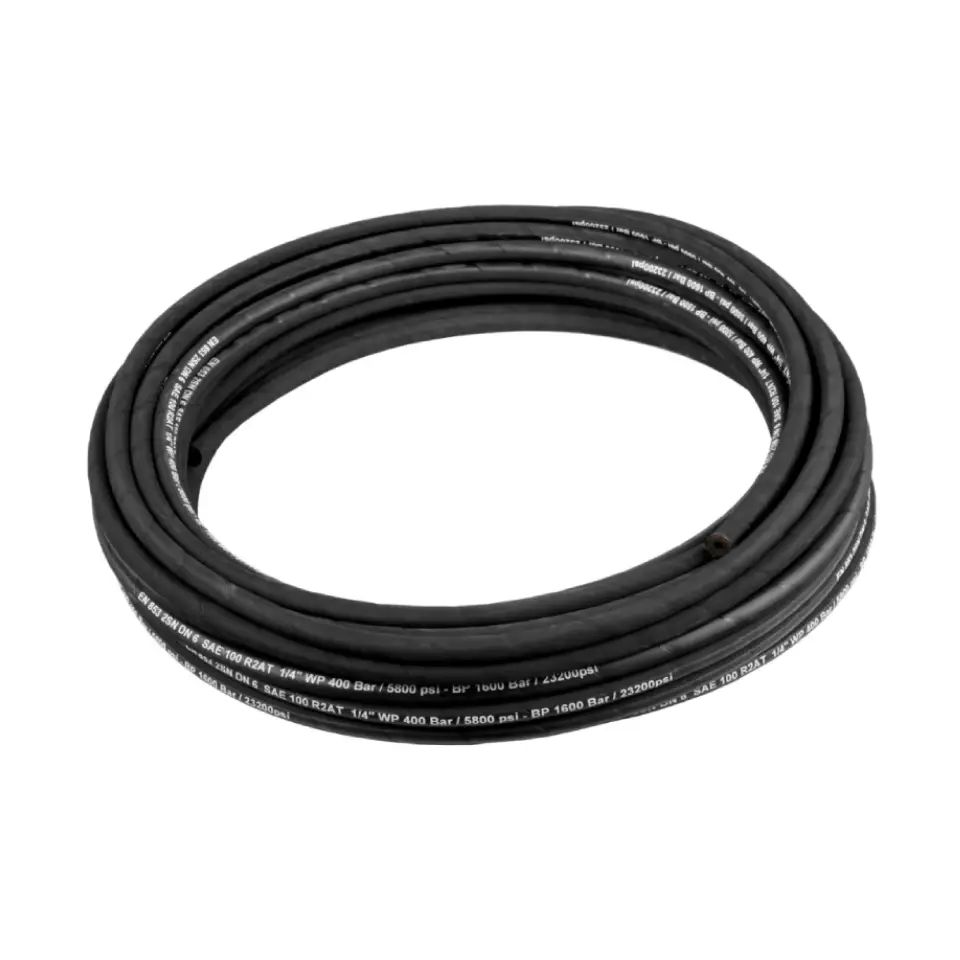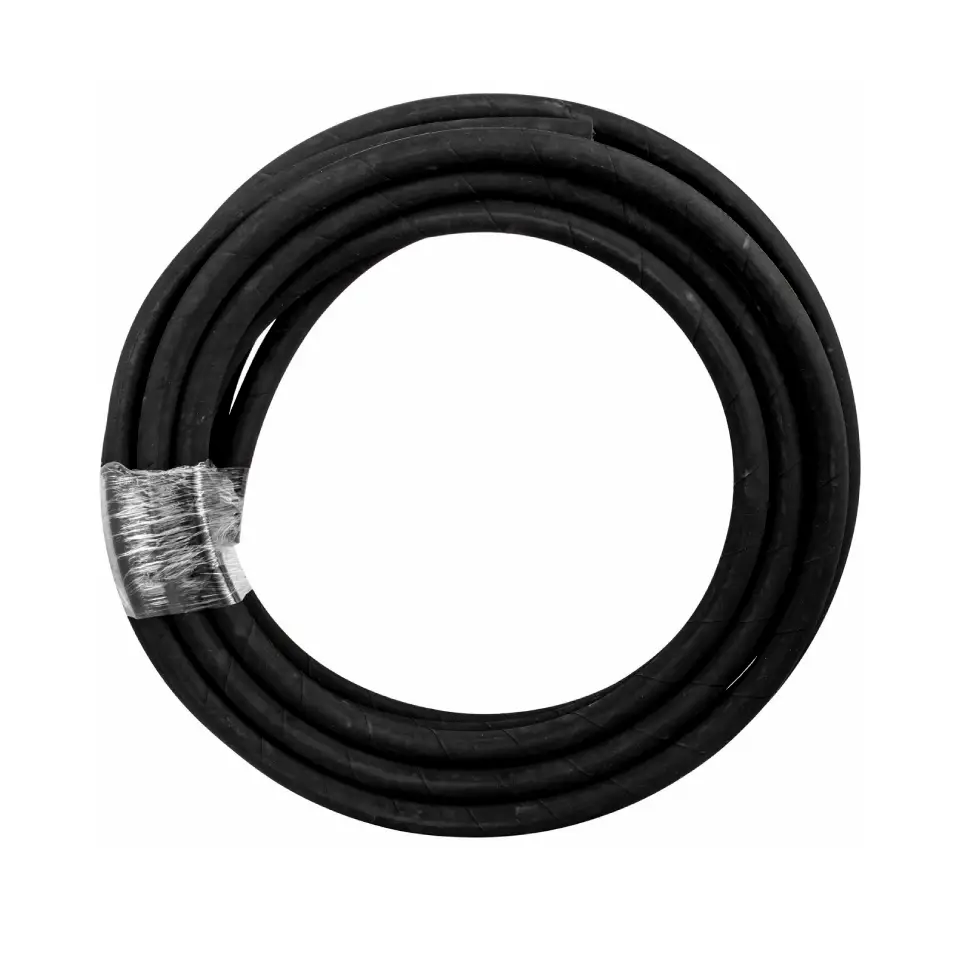0.5 inch 5800 psi hydraulic hose: High-pressure, versatile hose suitable for demanding applications. Learn about its construction, applications, and benefits for optimal performance and reliability.
Hoses designed for 5800 psi typically feature robust construction with multiple layers of reinforcement.
Inner Tube: Made from oil-resistant synthetic rubber to withstand the pressure and prevent fluid leakage.
Reinforcement Layers: Often include multiple layers of steel wire braid or synthetic fibers, providing exceptional strength and resistance to abrasion, kinking, and external damage.
Outer Cover: A tough, abrasion-resistant outer layer protects the hose from environmental factors like weather, chemicals, and mechanical wear and tear.

We supply 5800 PSI hydraulic hoses designed for high-pressure applications. Built with robust construction, including multiple layers of reinforcement, these hoses ensure maximum strength and durability. They are ideal for demanding environments where reliability and long service life are critical.
We supply high-pressure hydraulic hoses designed for demanding applications. Engineered with robust construction, they withstand extreme pressures while ensuring reliable fluid transfer. Our hoses offer superior flexibility, resistance to abrasion and kinking, and are suitable for a wide range of industries, including construction, mining, and heavy equipment.

The maximum pressure for a hydraulic hose varies significantly depending on several factors:
Hose Construction:
Hose Size:
Operating Temperature:
Application:
To determine the maximum pressure for a specific hydraulic hose, you must:
Important Note: Always use hydraulic hoses that are rated for the specific pressures and operating conditions of your application to ensure safety and prevent failures.
“Psi” stands for “pounds per square inch.” In the context of hydraulic hoses, it refers to the maximum pressure the hose is designed to withstand without failing.
Key Points:
Varying Pressures: Hydraulic hoses are available in a wide range of pressure ratings, from low-pressure applications to extremely high-pressure systems used in heavy-duty equipment.
Finding the Psi of a Hose:
Always use hydraulic hoses that are rated for the specific pressures and operating conditions of your application to ensure safety and prevent failures.
The numbers on hydraulic hoses often provide crucial information about their size and specifications. Here’s a breakdown:
For example, a “-6” hose has an inner diameter of 6/16 inch (or 3/8 inch).
Other Hydraulic Hose Markings:
Important!!
By understanding the markings on hydraulic hoses, you can better select the appropriate hose for your application and ensure compatibility with your system.
We are leading hydraulic hose manufacturer from China, and please feel free to contact us at any time if you are looking for hydraulic hoses, hydraulic hose fittings, industrial hoses, and other hose related products. Welcome to get in touch with us any time to get more hose solutions for your projects.
If you are looking for a professional hydraulic hose & industrial hose manufacturer, Kingdaflex will be your best choice. We provide better hydraulic hose wholesale and the best solution to help your hydraulic projects. Welcome to contact us at any time.